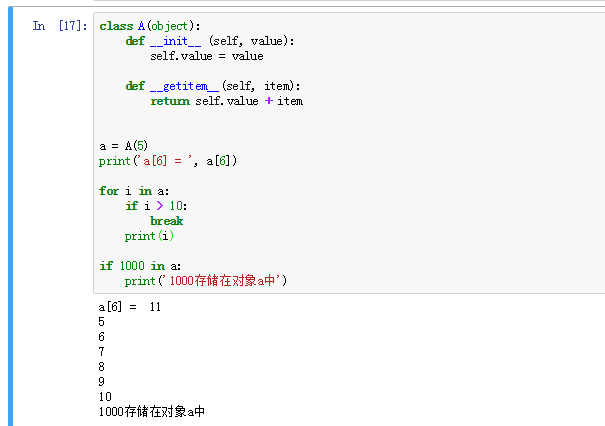在顶层抽象上,python对象是属性、方法、作用域的集合。
在底层实现上,python对象不过就是对c语言struct结构的封装。

一个python的int类型可以写成这样:
class python_int(object):
def __init__ (self, value):
self.value = value
def add_fun(num):
return self.value + num
def mul_fun(num):
return self.value * num
def equal_fun(num):
pass对应的c语言的struct结构体,可以写成这样:
typedef struct _int {
long value;
long (*add_fun)(long a, long b);
long (*mul_fun)(long a, long b);
```
}Int_object;通过上面的例子,我们可以看到,c语言如何利用struct结构和函数指针完成对对象的模拟。
尽管办法很‘土’,但我们已经初步揭开了python对象脸上的一层面纱。 对象就是struct的封装,这样的思想可以帮你理解很多python中难以理解的问题。
当然,这样还远远不够。例如:
1、按照上面的方法,实现一个python中的int类型对象,需要一个非常大的struct来装下int的值和可以作用于该对象的所有方法,太浪费空间了。
2、在c语言中,函数指针的返回值类型、参数类型都需要事先声明。在python中无论传入什么类型都不需要声明,比如str(3)与str('3')的结果完全一致。
我们一个一个解决。
第一个问题很容易想到解决办法,python相同的内建类型对应的方法都是一样的。借鉴设计模式的思想,把类型的值与类型所拥有的方法分开维护,所有相同的类型对象指向一个共同的方法struct结构,这样一个对象就可以被压缩到很小了。
代码如下:
typedef struct _int{
long value;
strcut _int_methods *methods;
} PyInt_Object;
typedef struct _int_methods{
long (*add_fun)(long a, long b);
long (*mul_fun)(long a, long b);
```
}Int_methods;可以画个图:

第二个问题的解答,则涉及到python数据对象的核心基石。
方案是,在python的所有的类型对象中都有类型一个类型属性 type ,python正是靠着这个属性正确地区分它们,在python中,可以用type函数打印他们。

你猜的没错,type本身也是一个python对象,或者说,也是一个封装的struct。 既然所有相同类型的对象都具有共同的方法,那么把 type 属性与方法们封装到一个struct中也就是一个很自然的想法了。 事实上,python也正是这么做的。
而在python世界中,对象们除了‘我是谁’(type)这个问题之外,还有另一个更重要的问题等着他们。
‘我还活着吗?’

这不是搞笑,总所周知,python垃圾回收采用了一个经典的(老土的)设计方法--引用计数。(现在的python还引入了一个分代回收的机制,这个以后再讲)
所有的python对象都要有一个记录自己引用计数的属性,refcnt, 当refcnt == 0 时,意味着没有任何python变量引用该对象。python会将该对象销毁,以免他们成为无主幽魂(内存泄漏)。
python中所有的对象都实现了这两个属性refcnt与type,换句话说,实现了这两个成员的struct变量都是python中的对象。代码如下:
typedef struct _object{
int ob_refcnt; //引用计数
struct _typeobject *ob_type; // 类型对象
}PyObject;而之前提到的整数类型PyIntObject实现如下:
typedef struct{
int ob_refcnt; //引用计数
struct _typeobject *ob_type; // 类型对象
long ob_ival; //int对象维护的值
} PyIntObject;可以看到python中整数对象、PyIntObject就是在PyObject的基础上维护了一个long的值。 而这个PyObject是python对象的核心基石,也是python最强大的魔法来源之一。
python中所有的对象都有一个这样的PyObject头。这样我们就很好理解,在python中,所有的变量,所有的函数,所有的类,其实都是PyObject对象。
而函数所有的输入、输出,都是PyObject对象·········的指针。
为什么对象的struct有了共同的头,就可以使用同一个指针?对c语言了解不深的同学可以看看我的解释。
在c语言中,指针有着三个作用
- 指针所指对象的位置
- 指针所指对象的大小
- 指针所指对象的解释方法
利用任何python对象的PyObject的指针 *p, 都可以通过p->ob_type获得对象的类型信息,python可以根据这个更换成相应的指针,比如 *PyIntObject。
python的type类型在源码中的定义(struct结构声明)如下:
太长了,你们不用全部都看(ˊo̴̶̷̤⌄o̴̶̷̤ˋ)。
typedef struct _typeobject {
int ob_refcnt; //引用计数
struct _typeobject *ob_type; // 类型对象
int ob_size; //变长对象的长度,如len(list), len(str), len(dict),int类型没有该属性
const char *tp_name; /* For printing, in format "<module>.<name>" */ // 变量的类型名字 如<class 'int'> <class 'type'>
Py_ssize_t tp_basicsize, tp_itemsize; /* For allocation */
/* Methods to implement standard operations */
destructor tp_dealloc;
printfunc tp_print;
getattrfunc tp_getattr;
setattrfunc tp_setattr;
cmpfunc tp_compare;
reprfunc tp_repr;
/* Method suites for standard classes */
PyNumberMethods *tp_as_number; //数字类型方法族
PySequenceMethods *tp_as_sequence; //序列类型方法族
PyMappingMethods *tp_as_mapping; //映射类型方法族
/* More standard operations (here for binary compatibility) */
hashfunc tp_hash;
ternaryfunc tp_call;
reprfunc tp_str;
getattrofunc tp_getattro;
setattrofunc tp_setattro;
/* Functions to access object as input/output buffer */
PyBufferProcs *tp_as_buffer;
/* Flags to define presence of optional/expanded features */
long tp_flags;
const char *tp_doc; /* Documentation string */
/* Assigned meaning in release 2.0 */
/* call function for all accessible objects */
traverseproc tp_traverse;
/* delete references to contained objects */
inquiry tp_clear;
/* Assigned meaning in release 2.1 */
/* rich comparisons */
richcmpfunc tp_richcompare;
/* weak reference enabler */
Py_ssize_t tp_weaklistoffset;
/* Added in release 2.2 */
/* Iterators */
getiterfunc tp_iter;
iternextfunc tp_iternext;
/* Attribute descriptor and subclassing stuff */
struct PyMethodDef *tp_methods;
struct PyMemberDef *tp_members;
struct PyGetSetDef *tp_getset;
struct _typeobject *tp_base;
PyObject *tp_dict;
descrgetfunc tp_descr_get;
descrsetfunc tp_descr_set;
Py_ssize_t tp_dictoffset;
initproc tp_init;
allocfunc tp_alloc;
newfunc tp_new;
freefunc tp_free; /* Low-level free-memory routine */
inquiry tp_is_gc; /* For PyObject_IS_GC */
PyObject *tp_bases;
PyObject *tp_mro; /* method resolution order */
PyObject *tp_cache;
PyObject *tp_subclasses;
PyObject *tp_weaklist;
destructor tp_del;
/* Type attribute cache version tag. Added in version 2.6 */
unsigned int tp_version_tag;
#ifdef COUNT_ALLOCS
/* these must be last and never explicitly initialized */
Py_ssize_t tp_allocs;
Py_ssize_t tp_frees;
Py_ssize_t tp_maxalloc;
struct _typeobject *tp_prev;
struct _typeobject *tp_next;
#endif
} PyTypeObject;这个PyTypeObject里声明了所有python内置类型的方法,所有的内置类型实现的方法都只是该声明的一个子集。
其中尤其值得注意的是其中声明的三个方法族指针
PyNumberMethods *tp_as_number; //数字类型方法族
PySequenceMethods *tp_as_sequence; //序列类型方法族
PyMappingMethods *tp_as_mapping; //映射类型方法族他们每一个都代表了该类型的一系列方法。
这三类不同的方法族就是python的内置对象被划为三大类的根本原因,数值类型、序列类型、映射类型。
比如PyNumberMethods的代码如下:
(也是很长很长···)
typedef struct {
/* For numbers without flag bit Py_TPFLAGS_CHECKTYPES set, all
arguments are guaranteed to be of the object's type (modulo
coercion hacks -- i.e. if the type's coercion function
returns other types, then these are allowed as well). Numbers that
have the Py_TPFLAGS_CHECKTYPES flag bit set should check *both*
arguments for proper type and implement the necessary conversions
in the slot functions themselves. */
binaryfunc nb_add; //加法
binaryfunc nb_subtract; //减法
binaryfunc nb_multiply; //乘法
binaryfunc nb_divide; //除法
binaryfunc nb_remainder; //求余
binaryfunc nb_divmod;
ternaryfunc nb_power;
unaryfunc nb_negative;
unaryfunc nb_positive;
unaryfunc nb_absolute;
inquiry nb_nonzero;
unaryfunc nb_invert;
binaryfunc nb_lshift;
binaryfunc nb_rshift;
binaryfunc nb_and;
binaryfunc nb_xor;
binaryfunc nb_or;
coercion nb_coerce;
unaryfunc nb_int;
unaryfunc nb_long;
unaryfunc nb_float;
unaryfunc nb_oct;
unaryfunc nb_hex;
/* Added in release 2.0 */
binaryfunc nb_inplace_add;
binaryfunc nb_inplace_subtract;
binaryfunc nb_inplace_multiply;
binaryfunc nb_inplace_divide;
binaryfunc nb_inplace_remainder;
ternaryfunc nb_inplace_power;
binaryfunc nb_inplace_lshift;
binaryfunc nb_inplace_rshift;
binaryfunc nb_inplace_and;
binaryfunc nb_inplace_xor;
binaryfunc nb_inplace_or;
/* Added in release 2.2 */
/* The following require the Py_TPFLAGS_HAVE_CLASS flag */
binaryfunc nb_floor_divide;
binaryfunc nb_true_divide;
binaryfunc nb_inplace_floor_divide;
binaryfunc nb_inplace_true_divide;
/* Added in release 2.5 */
unaryfunc nb_index;
} PyNumberMethods;可以看到,PyNumberMethods没有PyObject头,它没有回答python对象的两个关键问题,所以尽管他也是struct结构体,但它不是python对象。
那么在我们的python中,整数类型对象实现如下PyInt_Type:
PyTypeObject PyInt_Type = {
1; //引用计数
type; //类型
"int",
sizeof(PyIntObject),
0,
(destructor)int_dealloc, /* tp_dealloc */
(printfunc)int_print, /* tp_print */
0, /* tp_getattr */
0, /* tp_setattr */
(cmpfunc)int_compare, /* tp_compare */
(reprfunc)int_to_decimal_string,
&int_as_number, //数字类型方法族
0, //序列类型方法族
0, /* tp_as_mapping */映射类型方法族
(hashfunc)int_hash, /* tp_hash */
0, /* tp_call */
(reprfunc)int_to_decimal_string, /* tp_str */
PyObject_GenericGetAttr, /* tp_getattro */
0, /* tp_setattro */
0, /* tp_as_buffer */
Py_TPFLAGS_DEFAULT | Py_TPFLAGS_CHECKTYPES |
Py_TPFLAGS_BASETYPE | Py_TPFLAGS_INT_SUBCLASS, /* tp_flags */
int_doc, /* tp_doc */
0, /* tp_traverse */
0, /* tp_clear */
0, /* tp_richcompare */
0, /* tp_weaklistoffset */
0, /* tp_iter */
0, /* tp_iternext */
int_methods, /* tp_methods */
0, /* tp_members */
int_getset, /* tp_getset */
0, /* tp_base */
0, /* tp_dict */
0, /* tp_descr_get */
0, /* tp_descr_set */
0, /* tp_dictoffset */
0, /* tp_init */
0, /* tp_alloc */
int_new, /* tp_new */
};也不需要全部看,只要看到那些一大堆0,我想你就应该差不多明白了,PyInt_Type是PyTypeObject结构体声明实现一个结构变量,只实现了所有方法的一部分,这也符合我们对python的认知,你当然不应该这样写代码
5[6]
因为PyInt_Type没有实现序列方法族。(在序列方法族与映射方法族的两行上,全都是0,代码中我已经使用中文标注出来了)
反而言之,如果PyInt_Type实现了序列方法族,代码就可以这样写了。
5[6]
至于结果如何,全看你自己喜欢如何定义咯。
理解了python对象在c语言源码中的实现方式,许多问题都将迎刃而解。
1、为什么python语言明明没有变量声明,却是强类型语言?python是如何检查类型的?
因为python语言可以通过对象的PyObject指针获得他们类型信息,从而检查他们的类型。反观c语言,尽管有类型声明,然而c语言并没有检查他们变量类型的手段,或者换句话说,c语言中存储的值不记录他们自身的类型信息。
2、为什么list,dict等容器可以随意嵌套,如此灵活?
因为对于这些容器来说,他们存放的只是对象引用,也就是PyObject指针,无论存放什么对象对容器来说毫无区别。不难猜想,简单地利用c语言中的数组,就可以实现python中的list。
3、类的方法第一个参数是它自身,如何实现?
简单啊,在方法的struct中加一个记录自己所属类的成员变量就可以了。
关于python的一致性。
在《流畅的python》一书中,作者开篇就是
“python最好的品质之一就是一致性。”
而在该书的封底则写着
“理解为什么特殊方法是对象行为的一直的关键”。
读完此文之后,相信你已经理解了这句话的含义了,并且了解了所谓的一致性是如何实现的。
所谓的特殊方法,就是PyTypeObject中所给出的那一大串长长的方法。
他们就像是python赠与使用者的武器库,python不把它们雪藏起来,而是大大方方向我们地敞开,你可以随意挑选合适的武器武装自己。获得与python内置类型十分相似的属性。
然而就其本质而言,这些所谓的特殊方法实际上并没有什么真正特殊的地方。

一个类,只要你实现了__getitem__方法,就可以使用[]操作符,换句话说A[b]与A.__getitem__(b)普通函数调用别无二致,只是python提供给使用者的语法糖而已。

a明明不是一个序列,他充其量存储了一个整数值而已,然而只要我们实现了__getitem__方法就可以轻松骗过python,它甚至还傻乎乎地认为a中存储了1000呢。
了解这些并不是为了鼓励你们写出这样的代码,而是让你们了解所谓的特殊方法只不过是python的语法糖而已,并不特殊。
除了语法糖之外,我认为特殊方法的另一重更重要含义是程序员之间的约定俗成。
当你为一个类实现了__getitem__方法,那么它就应该是一个序列,或者说至少可以被当作序列来看待(参考什么是鸭子类型),那你也应该实现它__len__方法。上面这个类是不能使用len(a)的,这不符合我们对序列的期待。
python的一致性是由程序员之间的约定俗成共同维护的,这也就是为什么有人说:
“在python里私自取名__(双下划线)开头的函数是非常自私的行为.”
了解规则的边界,是为了更好地利用它,而不是破坏它。
ps: 真正的PyObject对象已经变成了这样:
typedef struct _object{
struct _object *_ob_next;
struct _object *_ob_prev;
int ob_refcnt; //引用计数
struct _typeobject *ob_type; // 类型对象
}PyObject;新加入的两个指针是在存活的对象之间构成一个双向链表,方便调试,与本文主题无关,故省去。